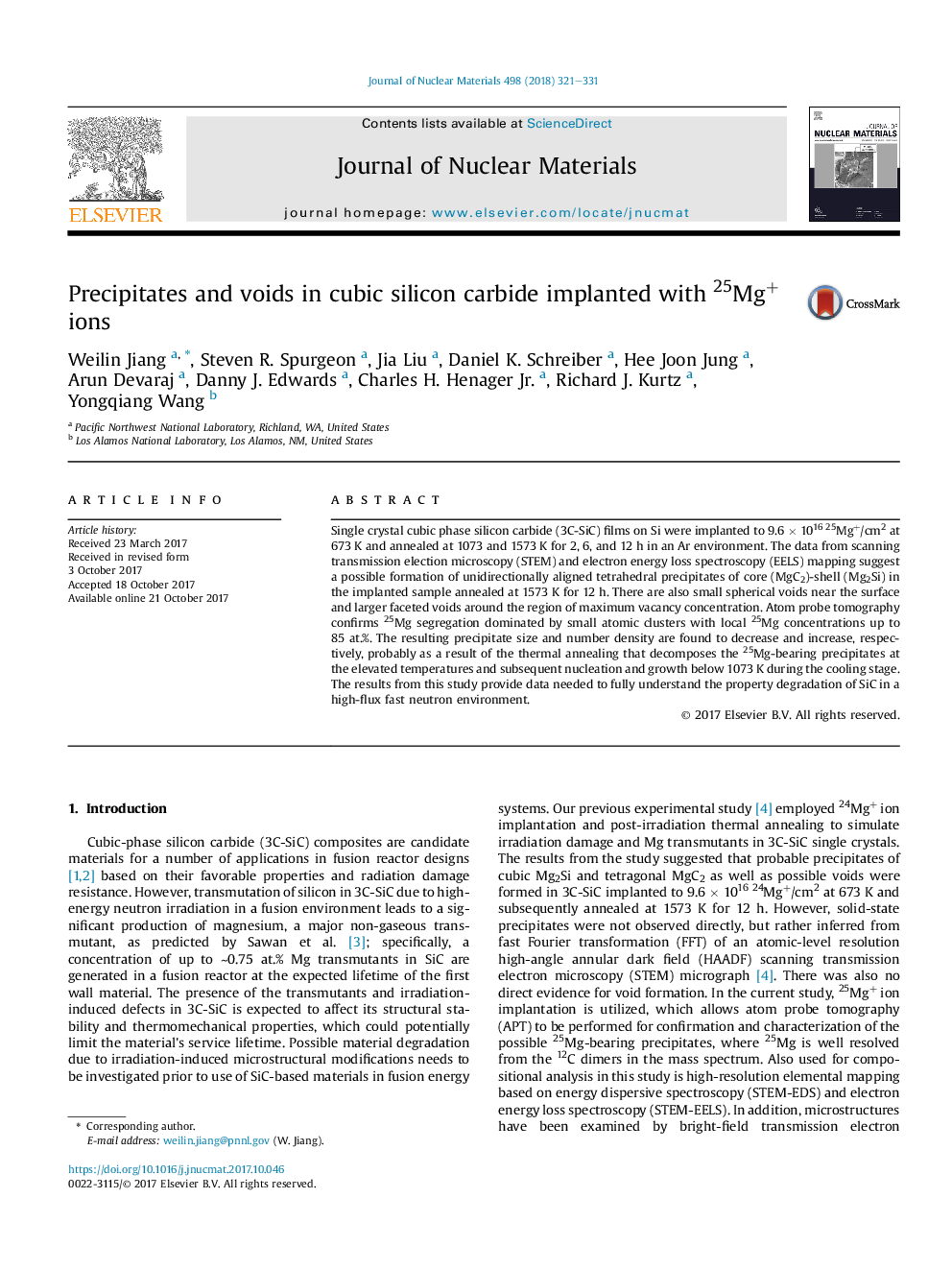| Article ID | Journal | Published Year | Pages | File Type |
|---|---|---|---|---|
| 7963664 | Journal of Nuclear Materials | 2018 | 11 Pages |
Abstract
Single crystal cubic phase silicon carbide (3C-SiC) films on Si were implanted to 9.6Â ÃÂ 101625Mg+/cm2 at 673Â K and annealed at 1073 and 1573Â K for 2, 6, and 12Â h in an Ar environment. The data from scanning transmission election microscopy (STEM) and electron energy loss spectroscopy (EELS) mapping suggest a possible formation of unidirectionally aligned tetrahedral precipitates of core (MgC2)-shell (Mg2Si) in the implanted sample annealed at 1573Â K for 12Â h. There are also small spherical voids near the surface and larger faceted voids around the region of maximum vacancy concentration. Atom probe tomography confirms 25Mg segregation dominated by small atomic clusters with local 25Mg concentrations up to 85Â at.%. The resulting precipitate size and number density are found to decrease and increase, respectively, probably as a result of the thermal annealing that decomposes the 25Mg-bearing precipitates at the elevated temperatures and subsequent nucleation and growth below 1073Â K during the cooling stage. The results from this study provide data needed to fully understand the property degradation of SiC in a high-flux fast neutron environment.
Related Topics
Physical Sciences and Engineering
Energy
Nuclear Energy and Engineering
Authors
Weilin Jiang, Steven R. Spurgeon, Jia Liu, Daniel K. Schreiber, Hee Joon Jung, Arun Devaraj, Danny J. Edwards, Charles H. Jr., Richard J. Kurtz, Yongqiang Wang,
